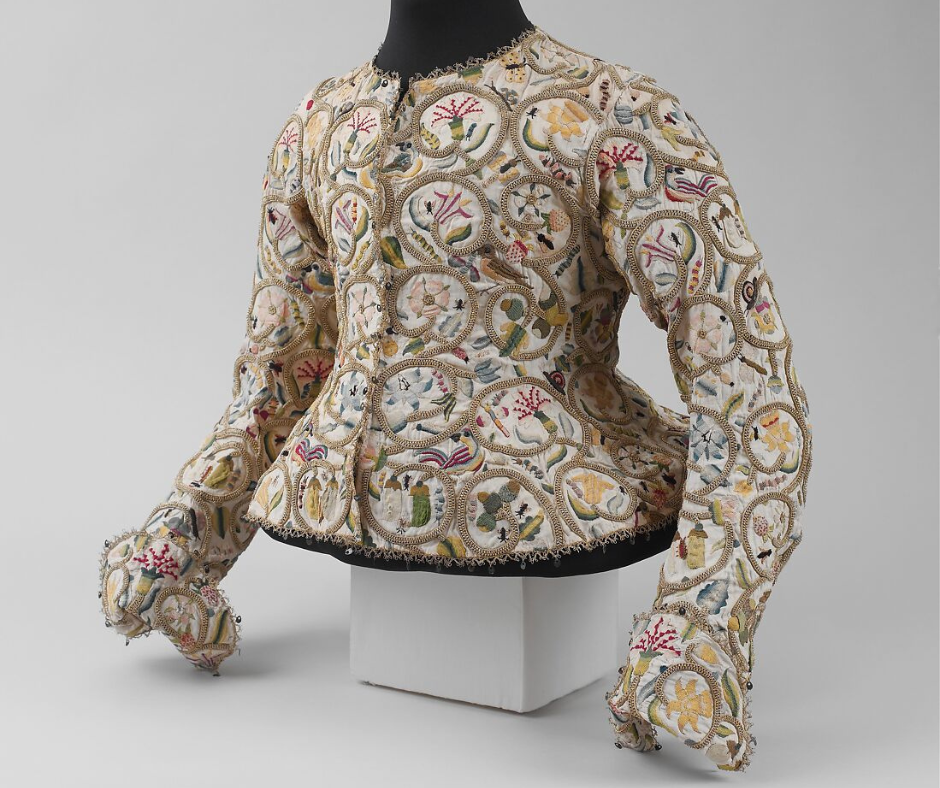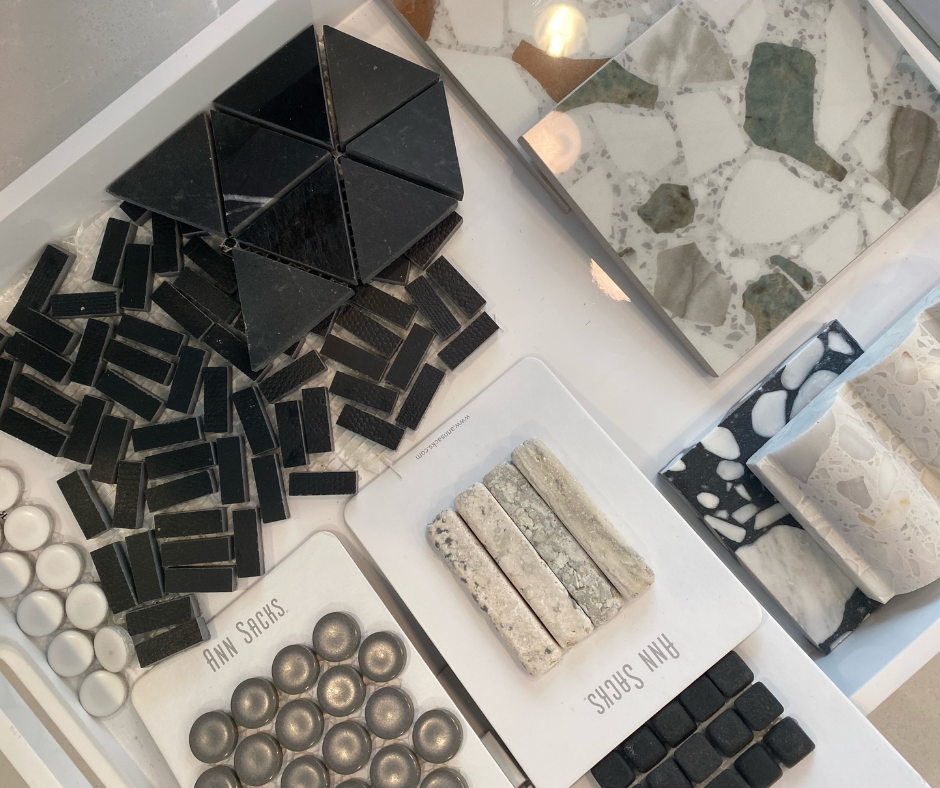
What is an Org Chart, and Why Do You Need One?
Summary
Organizational charts visually represent the structure of your interior design firm, showing who does what and how roles relate to one another. They are essential tools for onboarding, internal communication, and navigating growth or restructuring. From simple hierarchical models to more complex matrix or divisional charts, org charts help clarify responsibilities, minimize inefficiencies, and support career development. As your business expands, having an accurate, adaptable org chart is key to scaling with purpose and clarity.
Reflection Questions
How clearly is your current team structure defined—and could everyone on your team describe it the same way?
Which type of org chart (hierarchical, matrix, flat, etc.) best matches the values and workflow of your design firm?
In what ways could a well-structured org chart improve communication, delegation, or team morale within your studio?
Journal Prompt
Reflect on the current structure of your design business. How are roles, responsibilities, and reporting lines communicated? Imagine your firm doubles in size over the next year—how would you ensure everyone stays aligned and supported? Write about the kind of org chart that would serve your team best, and how you might use it to support onboarding, growth, and clarity of purpose.
An organizational chart – or “org chart” for short – is a visual representation of the people in your interior design firm. These diagrams describe the internal structure of your interior design business. They detail what each employee does, and explain how one role relates to another role. Org charts are helpful when onboarding new staff members, communicating internally and restructuring or expanding your business. Some org charts display all roles within the firm, while others describe a single department.
A firm might have multiple org charts. They might have one basic org chart – like a hierarchical chart – and a secondary org chart that is far more detailed – like a functional chart. Most organizations have a hierarchical structure with a C-suite or executive branch at the top. The rest of the company’s employees follow this executive branch – arranged in tiers according to level of responsibility, influence or importance. While the hierarchical organizational chart is most common, there are also flat or horizontal, matrix, divisional and functional org charts. Whatever type of org chart one chooses, the primary purpose is to express the organization’s structure in a clear, digestible way. In this post, we answer all your frequently-asked questions about org charts. We explain what they are, how to create one and why you need a well-designed org chart before growing your business.
Why Organizational Charts Are Essential for Growing Interior Design Firms
As your interior design firm scales, so does the complexity of your team structure. An organizational chart is an incredibly important tool for managing this growth effectively. It provides a clear visual of who does what, how teams interact, and where responsibilities lie—eliminating confusion and overlap. For firms expanding beyond a small founding team, org charts help define reporting lines, improve internal communication, and support smooth onboarding for new hires. They clarify career pathways for staff, boosting retention and morale.
During periods of rapid growth, restructuring, or team reorganization, a well-designed org chart also helps leadership make informed decisions about resource allocation, staffing needs, and workflow adjustments. In short, an org chart is a foundation for sustainable, strategic growth in your design practice.
Fuel your creative fire, thrive with support from peers, & make 2025 your firm’s best year yet!
JOIN THE DESIGNDASH COMMUNITY

Answering All Your FAQs About Org Charts
What is an Org Chart?
As noted above, an organizational chart is a graphical representation of a company’s internal structure. Remember that org charts describe internal structure – not the business, legal or tax structure. Some org charts are tiered to represent a company’s chain of command. Others are linear to demonstrate that all employees are on the same level. Large organizations might need multiple org charts to describe different departments, while small businesses might need only a single, fairly simple chart.
Your business might use its org chart as a management tool. Org charts help business owners manage expansion and/or downsizing. They help managers and team leaders onboard new hires by explaining the company structure. Org charts also provide employees with a clear picture of how their careers could grow within the company.
Equally important, org charts minimize inefficiencies, streamline operations, make delegating easier, and empower employees to set boundaries at work. We delve deeper into all the benefits of a well-designed org chart below.
Who Created the First Org Chart?
Daniel McCallum – general manager of Erie Railway – designed the first modern organizational chart back in the mid 19th century. His intention was to make Erie Railway more efficient as the company scaled and the railroad expanded. McCallum hoped to streamline the flow of information from one department to the next and to actually utilize this information in decision-making. In the company organizational chart McCallum designed, the chief executive officer and other c suite executives were placed at the bottom.
The rest of the chart branched out like a tree. Managers were represented by larger branches and employees under their direction were represented by smaller branches. As Caitlin Rosenthal writes in an article for McKinsey Quarterly, “day-to-day scheduling went to the divisional superintendents” in McCallum’s model. While short-term decision-making was relegated to superintendents, the C-suite still maintained a level of control. They used data that “flowed down from the branches of the tree to its roots…for oversight and long-term decision-making.”
McCallum’s organization chart represents his modular approach to managing operations on the railroad. This approach empowered managers to make all decisions necessary to keep the railroad running smoothly from one stop to the next. McCallum’s model ensured the company’s directors continued to receive important information they would need when planning the future of Erie Railway.
What are the Different Types of Organizational Charts?
Hierarchy Org Chart
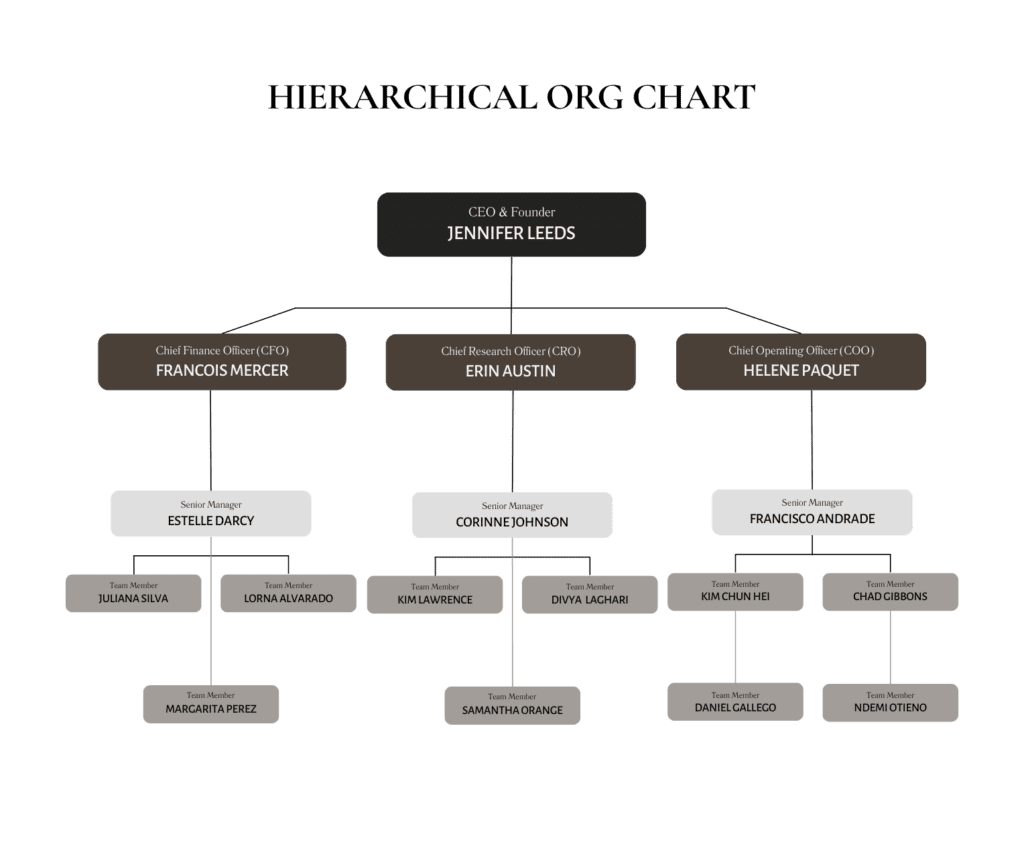
Of all the organizational chart examples on this list, the hierarchical org chart is most common. This is because a significant share of businesses arrange their staff in a top-down structure. Shareholders, a C-suite and/or a board are in the upper tiers of hierarchy charts, followed by directors and senior managers. Towards the other end of the chart are middle managers and other employees or contractors.
As James Chen writes in an article for Investopedia, organizations that arrange themselves hierarchically include “corporations…nonprofits, governments, schools and universities and the military.” Above is an example of a hierarchical org chart. You can see that most hierarchical org charts not only show how members of the organization rank. They also show relationships between equals.
Matrix Org Chart
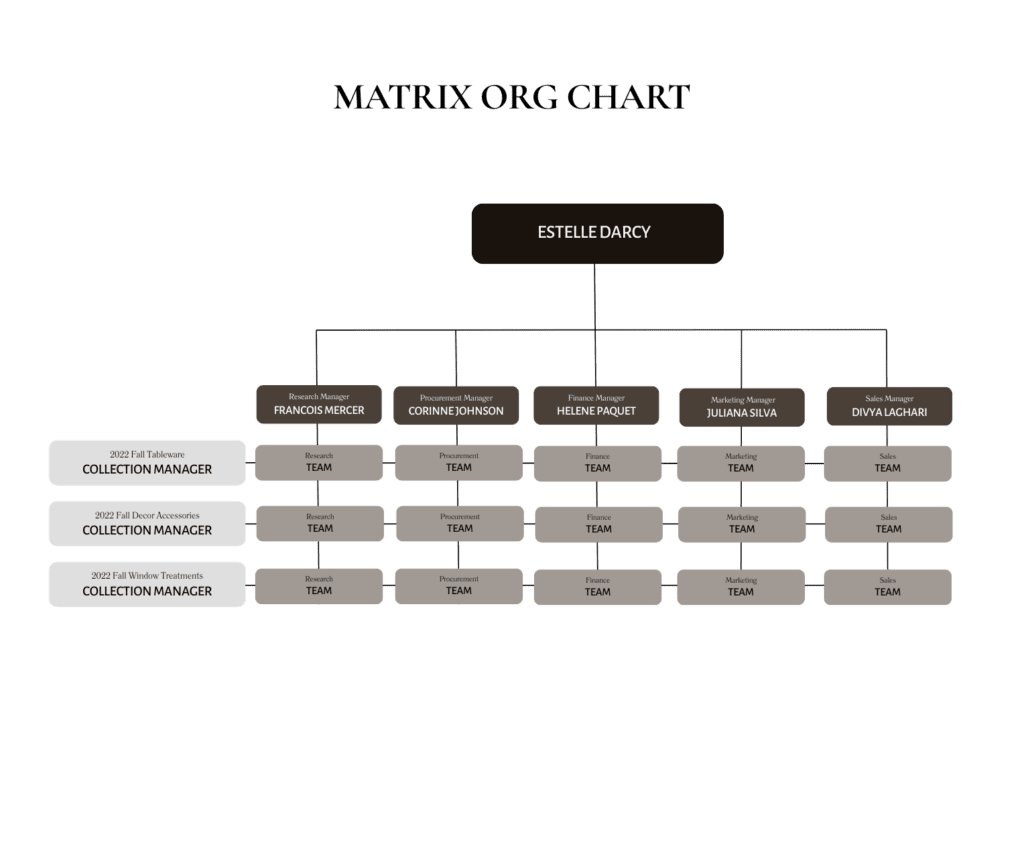
A matrix org chart is very similar to a hierarchical org chart, but is typically more detailed in its depictions of interdepartmental relationships. Opting for a matrix org chart might be the best choice if relationships between teams in your company are fairly complicated. For example, matrix charts work well when managers and employees frequently move between projects. They also make sense when one department relies heavily on another to complete a project.
Fuel your creative fire & be a part of a supportive community that values how you love to live.
subscribe to our newsletter
*please check your Spam folder for the latest DesignDash Magazine
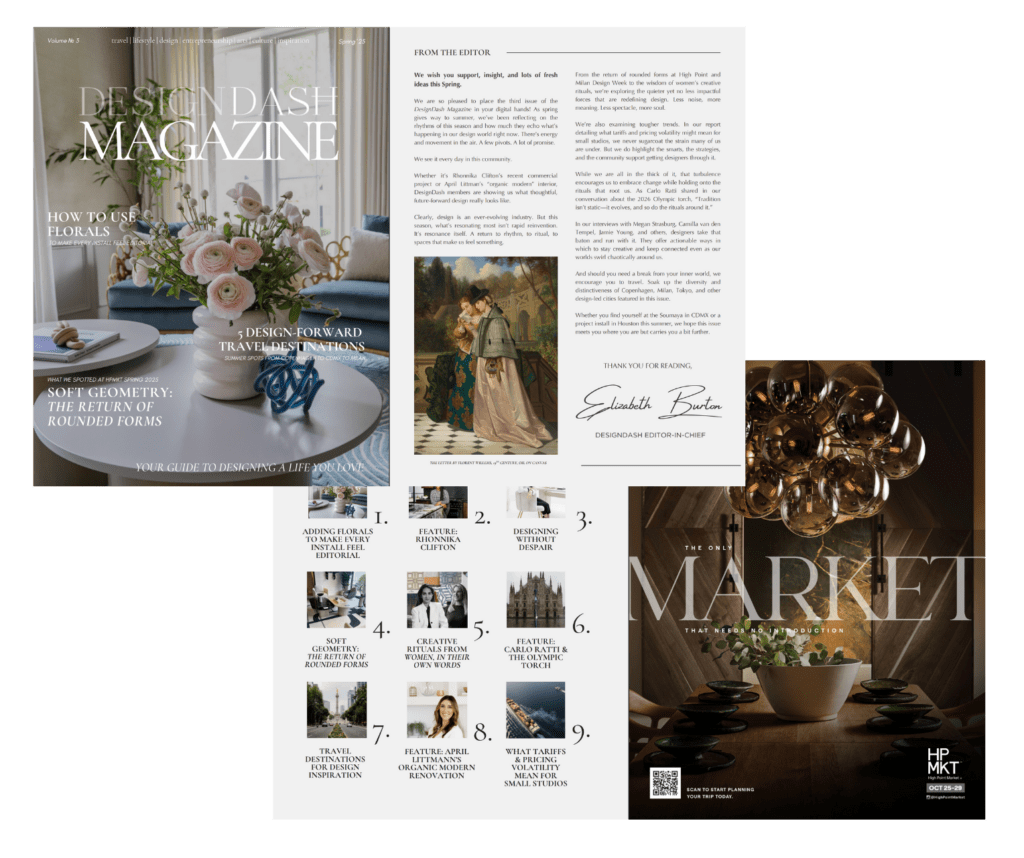
As Elizabeth Kellogg notes in an article for NerdWallet, “matrix org charts illustrate the immediate supervisory relationships between employees” as hierarchical models do. However, matrix org charts “also show the project manager, team, or department to which an employee reports.” To limit confusion, the graphic designers you hire or the software you use might suggest using different symbols to describe different types of relationships. For example, a matrix chart might use dotted lines to describe looser relationships and solid lines to represent direct relationships.
Horizontal or Flat Org Chart
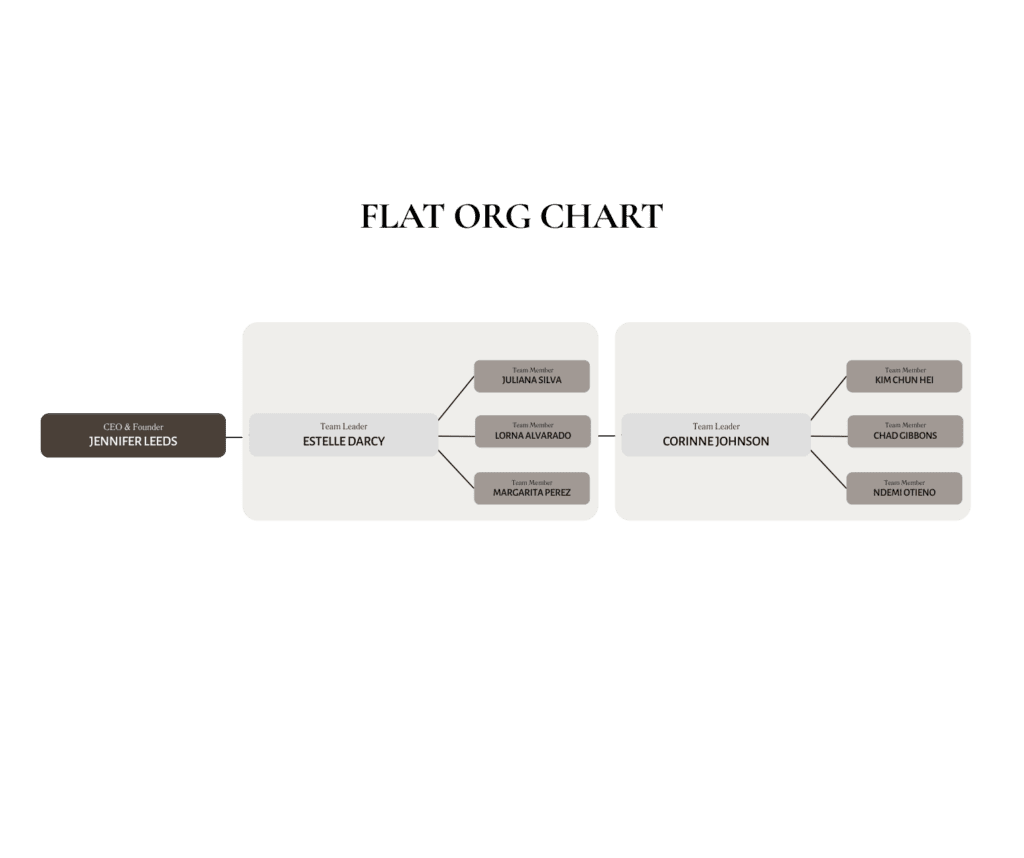
Next on our list of organizational charts is the horizontal or flat org chart. Horizontal and flat org charts imply that all members of the company are on equal footing. Startups, co-ops and collectives are most likely to utilize this type of org chart.
A flat or horizontal org chart might identify formal relationships within the organization. For example, it might describe relationships between teams or those between a manager and the employees he or she supervises. However, roles and departments are arranged horizontally rather than vertically. This reinforces the idea that no employee ranks higher than another and no team is more important than another.
Divisional Org Chart
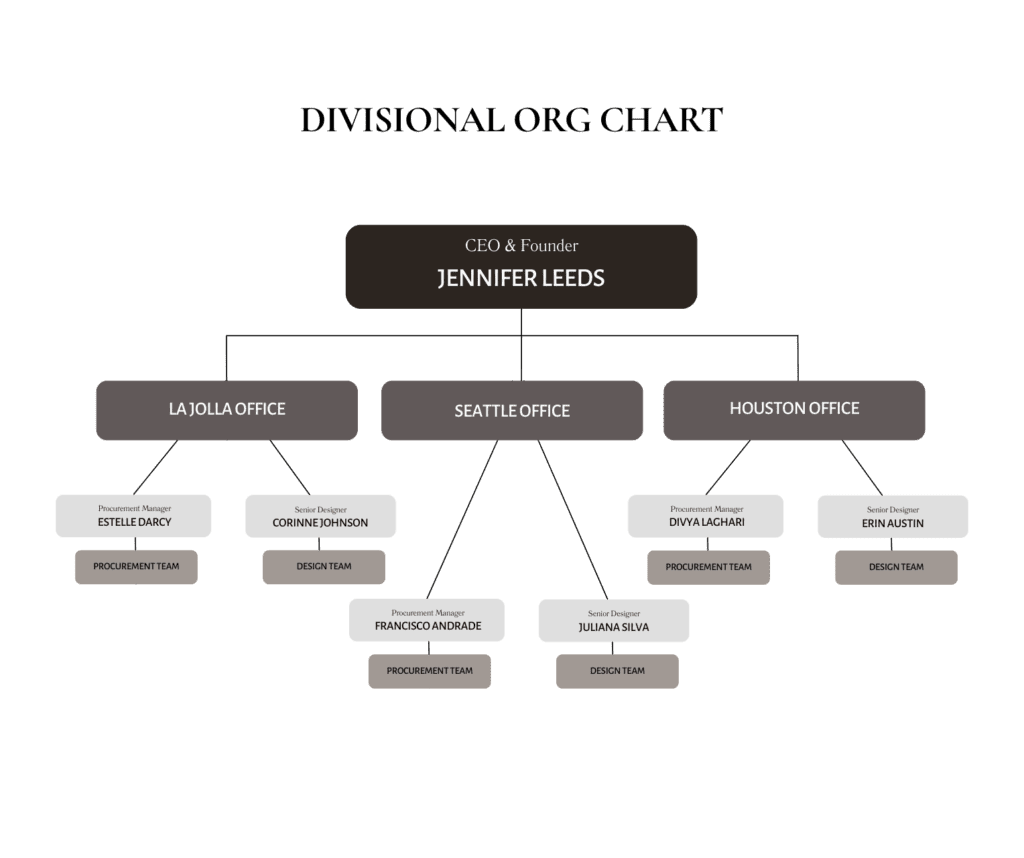
As you might have guessed, a divisional org chart breaks an organization down into divisions based on a certain function or location. A divisional org chart might divide the organization along geographic lines or by different product types that company manufactures or distributes.
Divisional charts are also common in businesses with multiple departments – e.g. R&D, marketing, finance and others. “Divisional org chart” is also an umbrella term for more specific org charts like process, geographic, product and customer org charts. Divisional org charts are typically better suited to larger organizations than to small businesses.
Functional Org Chart
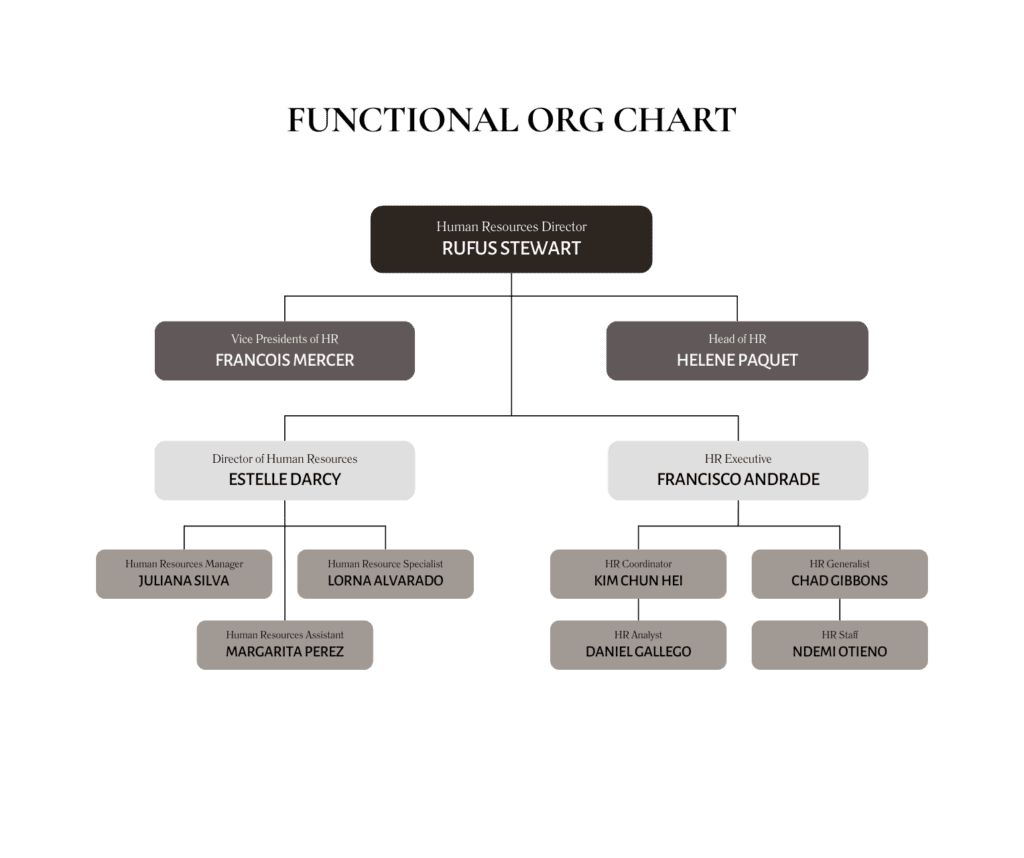
Though there are other types of org charts beyond the five we describe, the functional org chart is last on our list. Functional org charts are similar to both divisional and hierarchical org charts. A functional org chart is perhaps best described as a more fleshed-out hierarchical org chart. It typically provides more information about a company’s various roles and reporting structure.
In an article for The Thriving Small Business, Patricia Lotich explains. Lotich writes that a functional org chart separates individuals “by specific functions performed” and by expertise. In a corporation best represented by a functional chart, “managers of different functional areas all report up to one director or vice president.” That director or VP then “has responsibility for all of the operational areas.” The org chart designed by Daniel McCallum for the Erie Railway back in the 1800s could be described as a functional org chart.
Why Does Your Design Firm Need an Org Chart?

- Org charts help businesses manage growth, downsizing or restructuring. They do so by allowing owners to visualize changes to the structure, budget and allocation of resources within their company.
- The right organizational chart empowers employees to set boundaries with their managers and other employees by defining roles and responsibilities.
- Org charts can enhance trust through transparency regarding the structure and direction of the company.
- Organizational charts help managers onboard new employees and/or independent contractors by explaining how different departments and individual employees relate to each other.
- Org charts show employees how their careers could evolve within the company. This can improve employee retention within your interior design firm.
- Organization charts help minimize inefficiencies by providing a clear path along which data should flow from one department or employee to the next.
Design Your Dream Firm in Just 5 Days
JOIN THE CHAOS TO CLARITY CHALLENGE!

How Do You Design an Org Chart?
To design an org chart for your business, you will need a list of all job titles and the people who occupy those roles. You might also list roles that should exist in your company but have yet to be filled. Before creating your org chart, you should also consider your company’s values and culture.
You should think about how you want people within your company to relate to each other – from an efficiency standpoint and a cultural standpoint. Then, you should weigh the pros and cons of each type of org chart described above, determining which is best suited to your company.
You might prefer to design your org chart on your own – either by hand or using software like Organimi or Creatley. Alternatively, you might opt for a ready-made template or even choose to hire a designer with experience creating org charts for companies like yours.
Ready to Learn More About Designing an Org Chart for Your Growing Business?

While this post is an excellent introduction to org charts, there is much more to learn. We explain exactly how to design org charts for creative businesses in our workshops and future blog posts, so stay tuned! To learn more about why an accurate, agile org chart is essential when scaling your firm – and how to create and update your own – join the DesignDash Community. Keep up with all our latest offerings by joining our mailing list, following us on Instagram, or jumping into discussions.




